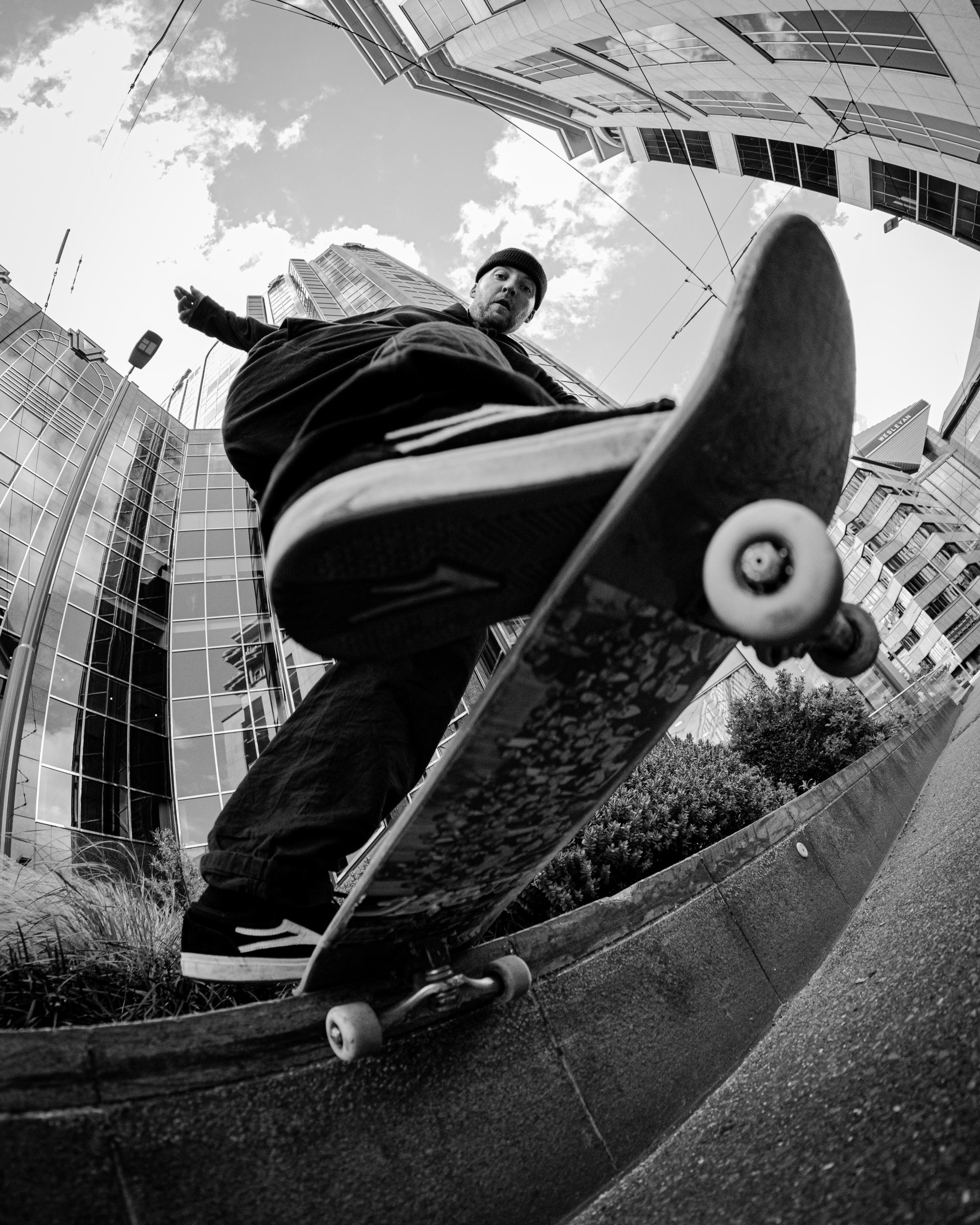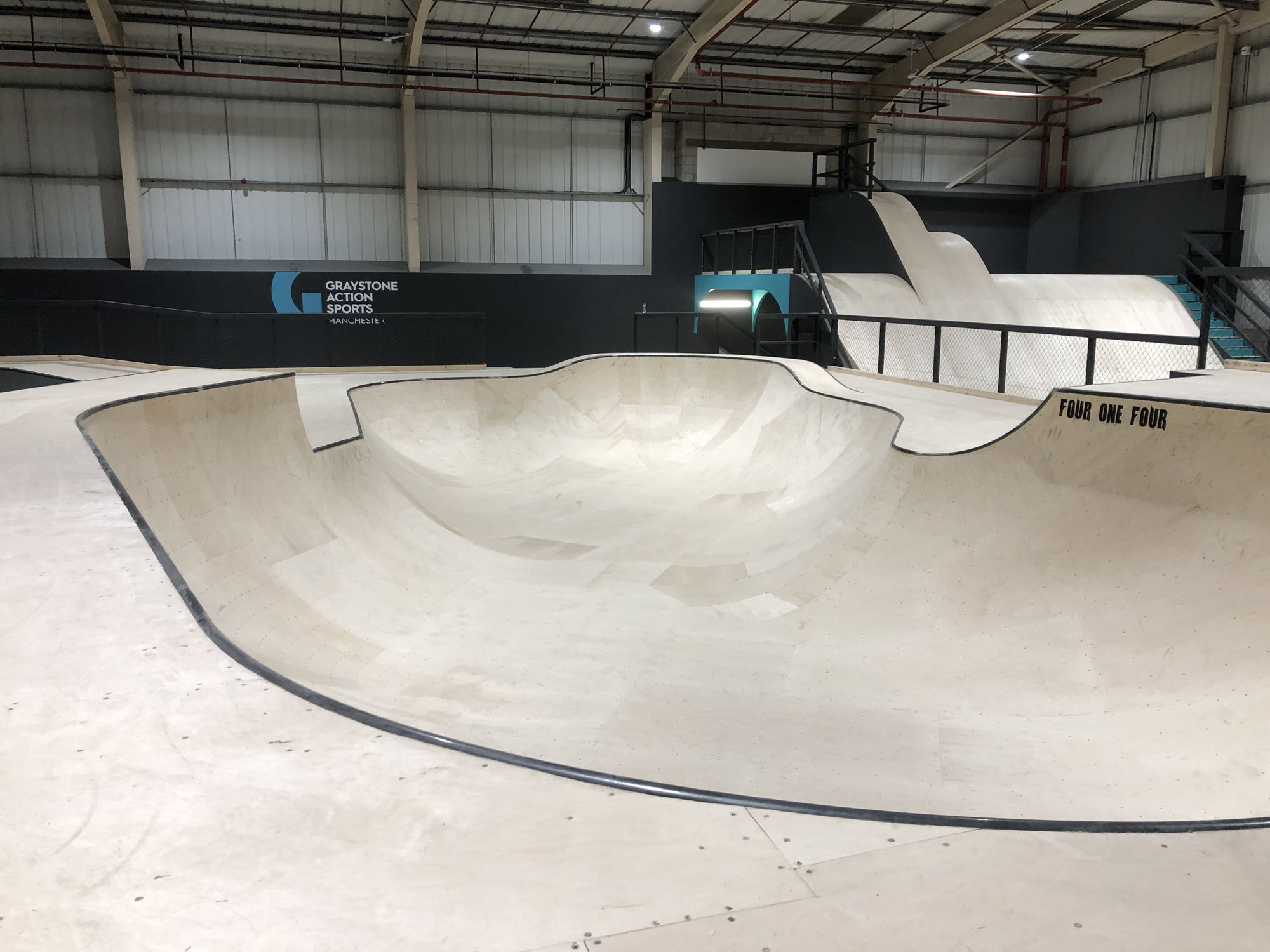Place one foot on the deck just overlapping the first two bolts at the front of your skateboard and place the other foot on the floor just next to the board, about halfway along its length. Bend the knee of the leg that’s on the board.
It’s important that this stance is comfortable, so it needs to be double checked. It doesn’t matter which leg is on the deck and which is on the floor, but make sure it’s understood that whichever leg is on the floor is the leg with which you will push (most people will place their left foot forward and push with their right).
To move forward, push off the ground while rocking the skateboard forward. When moving turn sideways and place the foot with which you were pushing, across the tail of the skateboard, just over the bolts. Once underway, pivot the front foot using the ball of your foot. This aligns your body and your feet together.













